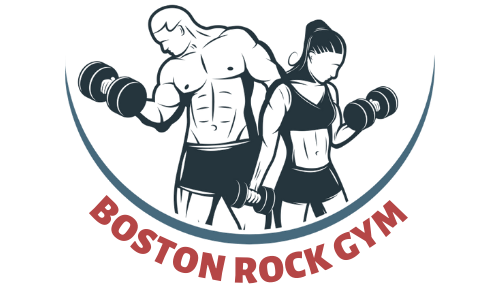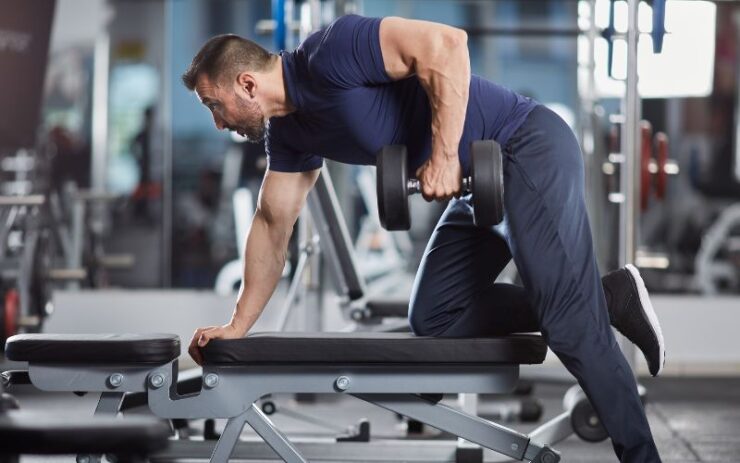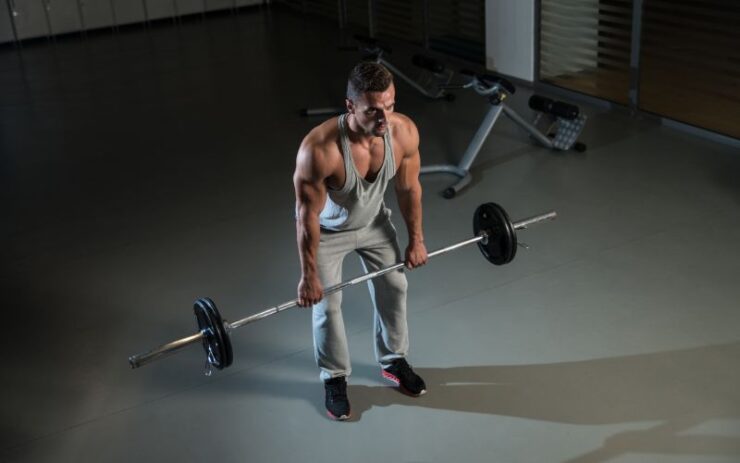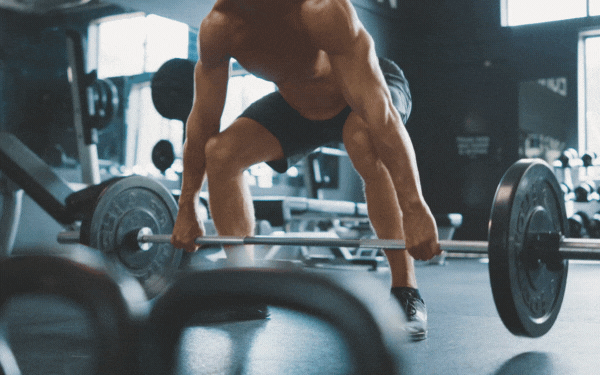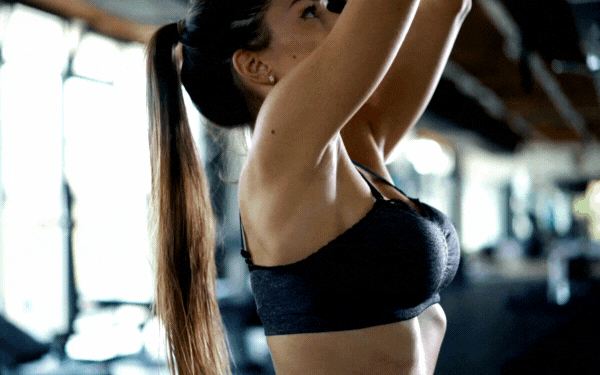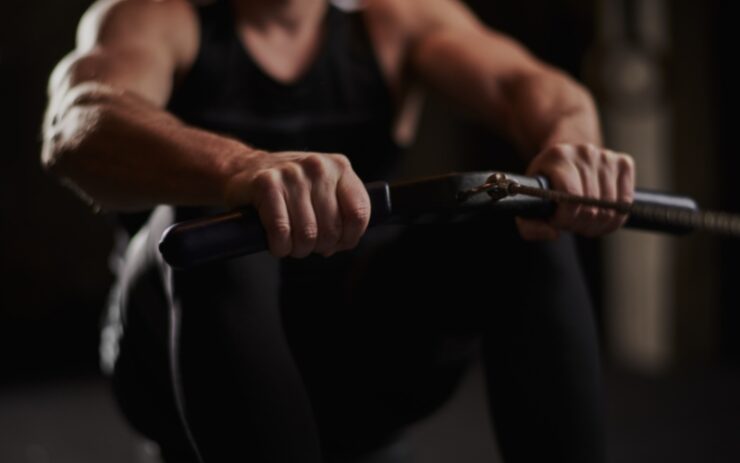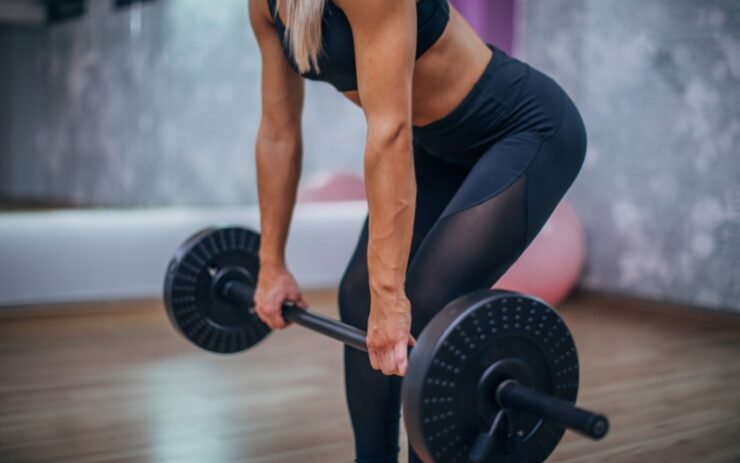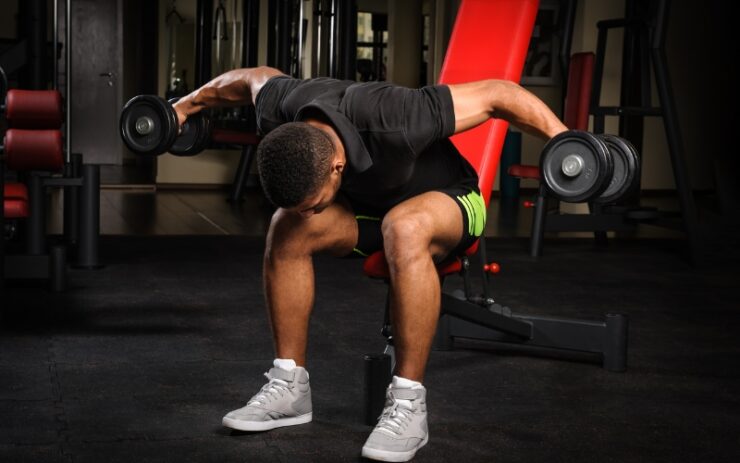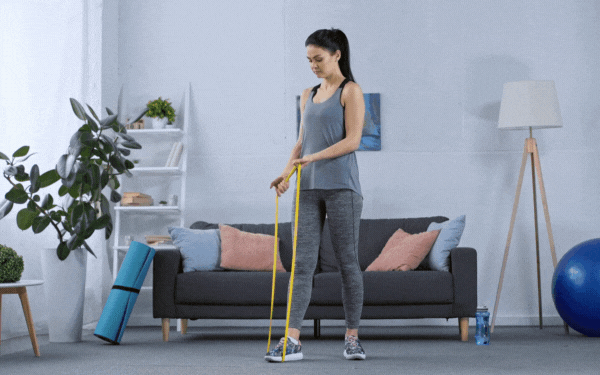If you’re searching for effective back exercises with resistance bands that won’t require hitting the gym, you’re in the right place! We’re here to help you learn about the best back workouts with resistance bands that you’ll be able to do in the comfort of your own living room if that’s what you would prefer.
Having back pain is no fun, and if you’re someone who suffers from it, you probably know how much exercising can help.
However, if you don’t want to hire a professional to walk you through the process and provide you with exercises, you can try a few simple ones from our list below on your own. Just remember to be careful and start slowly—you don’t want to overwork yourself!
Contents
Top 10 Effective Back Exercises With Resistance Bands
1. Single Arm Row
The latissimus dorsi is the main muscle in this movement. Thus, that is the primary muscle you are focusing on with this exercise. However, you will also work every back muscle, including the trapezius, rhomboids, teres major and minor, deltoids, infraspinatus, biceps, and even the pecs.
Additionally, since it only involves one arm, your core and low back are also going to be engaged in stabilizing activities. Here’s what to do:
- Specifically, focus on tugging with the back muscle just below and behind your shoulder
- Never let your abs relax; keep your back straight and avoid hunching over
- To align and stabilize your shoulder blades, pull your shoulder down and back
- If the action is too simple, tighten the band by winding it more tightly around your foot and looping your hands around it a few times
2. Bent Over Rows
One of the greatest back exercises is bent-over rows since they work several muscles at once. The lats, rhomboids, erector spinae, and traps are the primary muscle groups worked during this exercise. Your biceps, forearms, triceps, back delts, hamstrings, glutes, and core will also get an indirect workout. To complete this exercise, remember to:
- As you row, keep your hips hinged high
- Stay focused in your center
- Constantly stay in harmony
- At the bottom, draw your shoulder blades back
- Pull to your belly button
- After a brief period of holding, begin a gradual negative movement
3. Deadlift
The deadlift is the supreme posterior chain exercise. From your hamstrings to your traps, it works every muscle in your body. In order to concentrate significantly on squat exercises on leg days, you can choose to perform deadlifts on back days. To perform this exercise, remember the following advice:
- Never let your back arch. During the lowest part of the exercise, hinge your hips
- Use bands to gently descend and erupt upward. You’ll acquire some serious strength during the eccentric period
- To fully tighten all of your back muscles, straighten your lower back at the top and draw in your shoulder blades
- Always keep your chest up
4. Lat Pull Down
This workout, which concentrates on the lats, is also going to target your rear delts. This exercise strengthens the muscles in the V-shape and helps with posture. Here’s what you should remember:
- It might be challenging to do this exercise well using bands. Keep that mind-muscle link under control at all costs. Squeeze your lats hard as you descend, and then maintain them tight and constricted as you ascend
- Your shoulder blades are crucial to every back workout, as they are with this one. As you draw down, make certain that you retract your shoulder blades. Squeeze them together at a nearly diagonal angle, downward and backward
5. Seated Row
The muscles targeted here are the lower traps, latissimus dorsi, rhomboids, rear delts, and biceps. Since your lower back is required to stabilize your movement, this exercise will help strengthen your erector spinae. This exercise is excellent for your mid-back overall. Here are a few helpful tips:
- Sit up straight. It’s okay to slightly lean back
- Pull the band back while pulling your shoulder blades back
- When performing the eccentric phase, it is fine to protract the shoulder blades to increase the stretch (upon bringing the band back towards your feet)
- Keep your low back and your core both completely engaged
- Stroke towards the direction of your navel
6. Stiff-Legged Dead Lift
Although this exercise is often done with the legs, it also strengthens the posterior chain, which is the main emphasis of this article.
Anyhow, it will somewhat engage your forearms, lats, and traps as well as your hamstrings, erector spinae, and glutes. To figure out what to do, look at the list below:
- Always keep your knees slightly bent
- To avoid arching your back during the exercise, make sure to hinge your hips
- Pull your shoulder blades back as you ascend and stop when your spine is straight
- Really contract your back muscles in this manner
- The best negatives you could use for stiff-legged deadlifts are slow ones
7. Reverse Fly
As it targets the posterior delts, this exercise may be done on a shoulder day. However, since the rear delts sometimes require twice as much work each week, you should and could also attack it on a back day. Your rhomboids, rear delts, and traps will all be worked out by the reverse fly with bands. It’s a terrific workout for the upper back. Be careful to keep in mind this advice:
- Make sure to firmly tense the muscles in your upper back. Once you’ve reached the maximum contraction, squeeze and hold, then gently return to the beginning position
- Throughout each set, keep your core active
- To properly target the muscles in your upper back, try to keep your elbows up
8. Trap Raises
This is an additional exercise that may be performed on the shoulder day, but it can be frequently performed on a back day as well because the back muscle can tolerate greater volume each week.
Your traps and forearms will benefit from this workout. Hit this one if you like wrestler-style traps. With bands, it works really well. This is how to perform this exercise successfully:
- For one or two seconds, squeeze and hold the top
- Maintain a retractable shoulder girdle
- As you rise up, point your elbows back and up. You can better aim the traps as a result
9. Resistance Band Face Pull
You’ll need a firm object to wrap the band around for this portion of your banded back exercise, like a wooden beam in your home, the legs of your sofa, a vertical stair railing, or a pole.
However, the advantages of the workout outweigh the inconvenience because each repetition will build your rhomboids and rear deltoids. Here’s what you should do:
- At waist height, attach a long-loop resistance band around the item. With your feet shoulder-width apart and facing the item the band is connected to, take a few steps back from it. Hands spaced 3 to 4 inches apart and palms facing down should be used to grasp the band in front of the waist
- Maintaining high elbows and a flat back, pull the band up toward your face and press your shoulder blades together. Keep your traps loose to prevent your shoulders from hunching over your ears
- Hold for a count of two seconds, then gradually let go of the band to restart. Take another step away from the thing if it’s too simple
- Repeat
10. Good Morning
You should do this good morning exercise if you’re seeking a workout that builds more than simply your back. Your posterior chain, which is composed of the calf muscles, hamstrings, glutes, erector spine, and lats, is strengthened by this exercise.
- Take a stand with your feet shoulder-width apart. Place the band beneath the feet on one side, then cross the shoulders with the other end. Hold the band firmly just below your shoulders with your palms pointing inward
- Hinging at the hips, bend the body forward until you feel a stretch in your hamstrings while maintaining a flat back, a raised chest, and slightly bent knees
- Bring your torso gently up to standing by engaging your lower back, hinging at the hips
- Repeat
Conclusion
By maintaining the flexibility of the connective fibers in ligaments and tendons, exercises for the back lower stiffness. But, that’s not where the benefits stop.
Back exercises that increase mobility aid in preventing injury and back discomfort by preventing the connective fibers from rupturing under strain. Doing effective back exercises regularly will help you with flexibility, back pain, and overall health.
You don’t have to struggle with doing overbearing and difficult exercises either. Find a few simple ones on our list and do them in the comfort of your own home. The benefits will still come, and you won’t have to go to the gym if you don’t want to!
